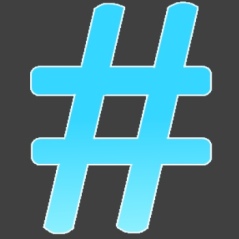 PLN and hashtags were not part of my vocabulary when I began teaching in 1993, but I could not live without either one of these terms within my professional life today. A Personal Learning Network (PLN) is the development of a community of practice, where people who have a shared passion join together for professional learning and growth (Wenger-Trayner & Wenger-Trayner, 2015). A hashtag is a means of organizing communication within a Twitter conversation or common thread. These two terms together are one of my personal means of professional development and are utilized for professional growth for many administrators. I discovered like-minded professionals and created and PLN that I share resources, ideas, and methodology using an education hashtag. School administration would benefit from the use of Twitter to develop professionally, find valuable resources, and discuss curriculum and instruction. Pendleton states (2017), “Twitter provides an opportunity for school leaders to join a community of practice that enables them to learn from each other and exchange ideas that support their professional growth” (abstract).
PLN and hashtags were not part of my vocabulary when I began teaching in 1993, but I could not live without either one of these terms within my professional life today. A Personal Learning Network (PLN) is the development of a community of practice, where people who have a shared passion join together for professional learning and growth (Wenger-Trayner & Wenger-Trayner, 2015). A hashtag is a means of organizing communication within a Twitter conversation or common thread. These two terms together are one of my personal means of professional development and are utilized for professional growth for many administrators. I discovered like-minded professionals and created and PLN that I share resources, ideas, and methodology using an education hashtag. School administration would benefit from the use of Twitter to develop professionally, find valuable resources, and discuss curriculum and instruction. Pendleton states (2017), “Twitter provides an opportunity for school leaders to join a community of practice that enables them to learn from each other and exchange ideas that support their professional growth” (abstract).
Twitter has become widely accepted by school leaders and teachers. Administrators follow educational leaders for inspiration resources, pedagogy, ideas, and experiences. Twitter chats are synchronized conversations about a particular subject, while hashtag conversations can take place any time, 24 hour a day. Both can be utilized effectively to enhance an administrator’s professional learning and collection of resources. Educational leaders must become lifelong learners who embrace change for school community success. Unfortunately, there are many leaders who are not shifting their educators’ methodology or school-based decisions. Being connected can aide in alleviating administrators’ stress due to the lack of time for formal training on new research and curriculum. One tweet may result in an administrator finding an appropriate curriculum resource, but curriculum changes require continuous learning. According to Cho (2016), administrators having “a sense of connection, knowledge about technology, and lesson plans for teachers can certainly benefit schools” (p. 22). Educators must be connected with a PLN to share resources, ideas, and inspiration. Our school leaders must encourage this lifelong learning by example. An administrator who develops positive curriculum changes due to a Twitter chat, may inspire a teacher to reach outside the district walls and find lessons and ideas through social media. Twitter is appropriate for leaders to utilize for curriculum development and instruction, but it is just one of many methods for a complete package of true learning. Ideas shared on Twitter should be well researched before implementation. One tweet should not change a district, but rather inspire further learning and development. Global learning, whether a child or adult, is always beneficial and should be encouraged for use by all stakeholders involved in education.
References
Cho, V. (2016). Administrators’ professional learning via twitter. Journal of Educational Administration, 54, 340–356. Retrieved from https://doi.org/10.1108/JEA-03-2015-002
Pendleton, Lesley Y. (2017). Twitter and school leaders: examining practices in a twitter chat. Dissertation Abstract, Georgia State University. Retrieved fromhttps://scholarworks.gsu.edu/eps_diss/169
Wenger-Trayner, E., & Wenger-Trayner, B. (2015). Introduction to communities of practice. Retrieved from http://wenger-trayner.com/introduction-to-communities-of-practice/
One of the most challenging aspects of anything new is overcoming the mental models inherent in any organization. School and district leaders are often those who are most averse to change. However, the collective intelligence of a large, diverse network of knowledgeable professionals can help solve problems, foresee issues and share stories. Sharing among social networks should be the norm and not the exception.
I agree…be proactive.